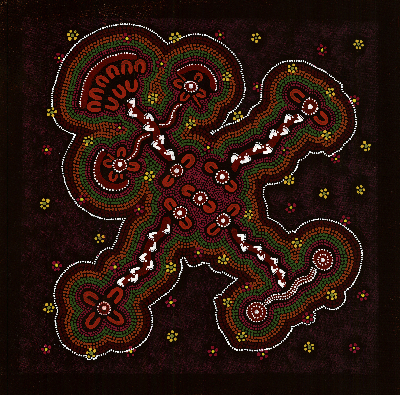Compliance Bulletin
Welcome to the September 2025 edition

Better understanding the Sublicence and Funding Agreement.
This HIPPY Compliance Bulletin helps sites understand their Sublicence and Funding Agreement. It provides practical tips, ideas, and examples to help sites stay compliant and meet their obligations. The Bulletin breaks down key parts of the Sublicence, showing how strong compliance and quality practices support successful program delivery.
Though particularly focussed at supporting Line Managers - who are responsible for ensuring compliance to the Sublicence - these bulletins work to help Coordinators understand how HIPPY is administered and how the work they do fulfils their organisation’s contract with BSL.
This month’s focus is on monitoring and evaluation.
The role of HIPPY Australia in monitoring and evaluating the program
Monitoring and evaluation sit at the heart of HIPPY Australia’s practice.
Collecting data is key to being able to measure the impact of HIPPY for Tutors and families, supporting HIPPY staff to plan effectively, and adding to our evidence base for both ongoing improvement of the program and our advocacy in securing support and funding from government.
While HIPPY Australia uses this data at both the network and site levels to meet government reporting requirements and demonstrate the program’s national impact, it also serves as a valuable tool for sites to inform and strengthen their local practice.
ETO
HIPPY Australia uses the Efforts to Outcomes (ETO) performance management system as a key tool for monitoring and evaluation, recording program data related to HIPPY delivery across the network. HIPPY Australia selected ETO due to its capabilities to record and report data that goes beyond counting program participants and packs delivered. ETO also captures the effort put in by HIPPY staff in supporting and engaging families, as well as the outcomes they achieved – helping us tell a more complete story of the program and identify what’s working and where additional support or focus may be needed. |
Click below for a deeper look at how monitoring and evaluation supports families, site staff and the program’s development.
What's in the Sublicence?
The Sublicence and Funding Agreement explains that HIPPY Australia is the ultimate authority on how program quality is defined. The Sublicence sets out that HIPPY Australia will monitor and evaluate the activities carried out by HIPPY providers as part of the program and will inform providers if anything is subject to change or is currently unmet and requires immediate attention. The Sublicence also states that HIPPY Australia (after giving advance notice) has the right to observe and gather information about the operations of HIPPY providers or allow HIPPY International or the Department of Social Services the right to do the same. |
The importance of quality assurance
Good quality assurance is an important part of functional monitoring and evaluation systems. It fosters continuous improvement and innovation through the continuous or periodic review of program performance. Having a quality assurance lens in our practice helps us to reflect on and identify opportunities to deliver HIPPY more effectively.
At HIPPY, quality assurance prompts us to ask whether HIPPY is being delivered to a standard that truly makes a positive impact on children, families, Tutors and communities. It establishes shared benchmarks for what an effective and high performing HIPPY site should look like, and supports those not yet meeting that standard to identify the steps to meet quality delivery. Quality assurance also assists HIPPY Australia to continually improve the program for all providers, families and HIPPY communities.
Key tools for measuring quality assurance
The Assessment of Program Quality (that will be relaunched in 2026 for gauging quality of delivery), the Compliance Checklist (for ensuring adherence to the Sublicence and Funding Agreement) and the Annual Statement of Safeguarding Compliance or ‘ASoSC’ (for ensuring processes and checks are in place to protect children and vulnerable people) are the key tools for measuring how sites are performing and whether they are fulfilling the terms of the Sublicence and Funding Agreement.
Other tools used to monitor and support sites include:
- Site Advisors’ monthly site catch-ups, including report monitoring and coaching
- Development plans, reviews and visits
- The completion of online learning modules
- Face-to-face training
- Individualised training and support from the Quality, Performance and Administration and Network Engagement teams
Quality data in - quality data out
| Effective monitoring and evaluation relies on the input of good quality data. It is important that sites ensure that quality data is entered into ETO – this means that the data is accurate, complete and can provide context why certain things happen. It is important for Coordinators to coach Tutors to collect data that includes contextual information so that HIPPY staff can understand what is happening for families on their HIPPY journeys and at a site level. For example, rather than simply writing that a family didn’t enjoy a certain activity when completing a pack delivery form, Tutors should record whether a family felt that way because of certain challenges – maybe the child struggled with a particular learning concept – and then could explore alternative methods the family could achieve the learning objective. The richer the data collected, the deeper the understanding of what’s happening for families and sites and ultimately of what can be done to improve outcomes for everyone. |
Monitoring – a shared responsibility
| Schedule 4 (Staff roles and responsibilities) of the Sublicence and Funding Agreement outlines the role of the Coordinator and the Line Manager in monitoring the program. Coordinators are expected to monitor program delivery data on ETO and complete Coordinator reports. Monitoring is recognised as an important part of the Coordinator role and is covered in preservice Coordinator training alongside quality improvement and record keeping. It is the responsibility of Line Managers to support and supervise Coordinators to ensure that all data is entered and meets quality standards. |
The quality assurance framework
As part of HIPPY Australia’s commitment to supporting providers to achieve positive impacts in the four outcome areas, we are redeveloping our performance framework.
The framework is made up of four main components:
- Assessments
- Monitoring
- Coaching and capacity building
- Reporting
Reporting requirements
The Sublicence and Funding Agreement requires that the HIPPY provider inputs and maintains accurate program data, entering all data in a timely manner. This includes entering data into ETO within ten business days of the activity occurring. In addition to this, HIPPY data is also uploaded to the DSS data exchange database (DEX) on a quarterly basis. To ensure that all data for the quarter is ready for uploading to DEX, data must be entered in ETO within 10 business days of the end of quarter with significant ramifications for the program if the deadline is missed.
For more information about data collection and entry requirements, see the Data collection guide on the LMS. |
Alongside regular data entry into ETO, Coordinators and Line Managers are required to report on their local program both biannually and annually through the following:
FAQs
Within each Bulletin we’ll now be answering sites’ questions on the monthly topic.
Next month’s topic is confidentiality, privacy and fraud.
Send your questions through to hippyaustralia@bsl.org.au with the subject ‘Compliance Bulletin FAQs’ to be included in the next edition!



